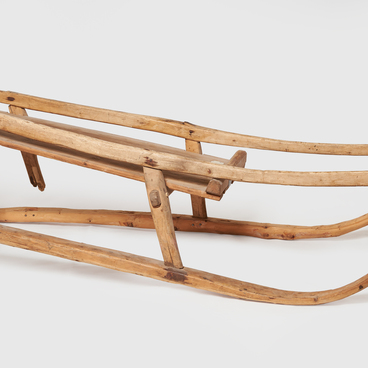The ancient Egyptians and Greeks presumably knew several wood bending techniques. Wood was bent using steam or boiling water, and then it softened and became pliable. After the wood reached this point, templates were used to cut out parts for future products.
By the early 17th century, this technique was used in shipbuilding and manufacture of barrels, wheels, carriages, and furniture.
Bentwood furniture gained worldwide recognition in the 19th century thanks to Michael Thonet, a cabinetmaker born in the German city of Boppard. Thonet began designing bentwood furniture in the 1830s. He used plywood sheets: they were cut into strips in the direction of the fibers and boiled in glue. Special templates were used to simultaneously achieve identical pieces.
In 1841, Austrian Chancellor Klemens von Metternich noticed Thonet’s products at an exhibition and said, “In Boppard you will always remain a poor man, go to Vienna!” He also promised his support. A year later, the inventor received an official production permit in Vienna, and soon his furniture became popular among different strata of society, including with court officials.
In the mid-19th century, Michael signed his company over to his sons under the name “The Thonet Brothers”. Around the same time, the No. 14 chair went into mass production. It became highly popular due to its lightness (it weighed only three kilograms), durability (for advertising purposes, the chair was dropped from the Eiffel Tower, and it survived the fall), low cost and elegant clean design.
The company also established a good reputation in the Russian Empire, where in the 1880s it was declared a supplier to the imperial court. The company offered about 1200 different models of furniture.
Despite the resounding success, in the second half of the 19th century, “The Thonet Brothers” faced a serious competitor — the firm “Jacob & Josef Kohn”. As Irina Anatolyevna Gostinshchikova writes, it was this firm that “was one of the first to apply innovative technologies in the process of bending beech wood” (it took them several minutes to complete the process that took the Thonet company two hours) and “realized the need to involve the most fashionable designers and architects in the development of new products”. Hence, they offered a significantly larger selection of different models.
At the World’s Fair in Paris in 1878, the two rivals were awarded gold medals.
This exhibit was donated to the museum by Svetlana Sergeyevna Mendeleva, who inherited the chair from a resident of the village of Oktyabrskoye, Appolinaria Stepanovna Shilova.




